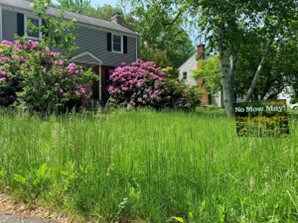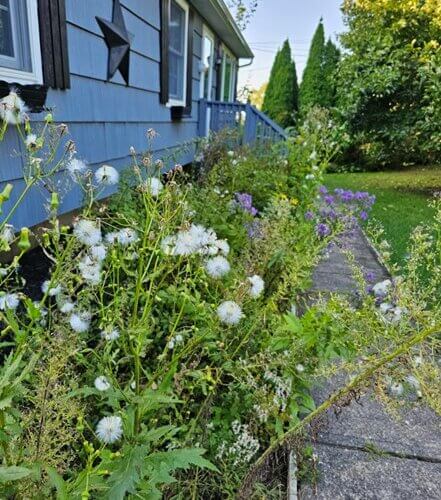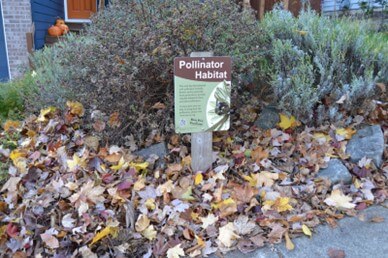Written by Christine O’Neill, Environmental Planner II
Many Connecticut municipalities have adopted blight ordinances to regulate unsightly properties that lower surrounding home values or create public health and safety issues. Such ordinances may be enforced by zoning officials, the police department, or a combination of the two. While these regulations serve an important role, they may unwittingly outlaw native landscaping from your community.
Native landscaping uses plants that have historically grown in a given area to achieve ecological benefits. Native plants provide food for pollinators and wildlife, require less watering and maintenance than ornamental counterparts, and launch deeper root systems that prevent erosion and exchange nutrients with the soil. Another component of native landscaping is maintaining or emulating the natural processes of the ecosystem, such as not raking leaves in the fall or cutting back dormant plants. Two movements associated with native landscaping are “No Mow May” (allowing insects to emerge from overwintering while providing food sources for early pollinators) and “Leave the Leaves” (intentionally leaving layers of leaf-litter and duff, which are valuable for soil health, insect and amphibian habitat, and wildlife cover).



Compared to the highly manicured gardening we often see, a native garden may look unruly – even falling into the definition of blight. Several municipalities in our region consider the following to be elements of blight: overgrown vegetation, leaf litter, grasses over a given number of inches, and “weeds.1”
Consider amending your definition of blight to exclude native landscaping as described above. The Town of Cheshire in our region already excludes “areas maintained in their original naturally wooded state, or a natural field state” from its definition, while the City of Stamford carves out an exemption for “managed natural meadow landscapes.” Confer with your municipal counsel to ensure your proposed language is legally sound and enforceable.
[1] Note: “Weeds” does not refer to any particular group of plants – it is a descriptive term used to characterize any plants that are undesirable in a given environment. One neighbor’s weed is another neighbor’s wildflower.
Please send any questions or suggestions to Christine O’Neill, Environmental Planner II at coneill@nvcogct.gov.


